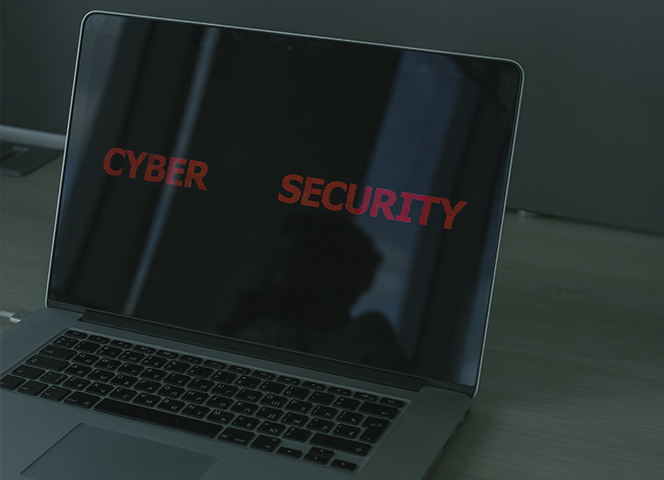The rate of attacks cyber criminals launch increases exponentially with each passing year, and businesses and organizations that rely on remote employees are especially vulnerable to cyber-attacks.
Although remote working has become the norm, it also has the potential to expose security vulnerabilities in a company’s digital infrastructure. Employees must use their personal computers to access the company’s network if the company does not provide remote workstations.
The personal computers of remote employees might need better cybersecurity measures to meet safety standards. Furthermore, remote employees may not adhere to cybersecurity policies or practice good internet habits at home.
That’s why it’s essential for remote employees to understand how critical cybersecurity is and for them to enhance security on their personal computers to protect the company. Fostering a culture of cybersecurity is a good way to encourage employees to take cybersecurity seriously.
Make Cybersecurity Company Policy
Companies should make cybersecurity policies that apply to employees at every level, from the CEO to the ground floor. A study from 2021 found that 85% of all data breaches happened because of human error. That means employees are unwittingly responsible for most data breaches that occur.
The higher the employee is in the company’s structure, the more important it is to follow the policy. Cyber attackers will often target employees with the greatest access to every system and work their way down. This approach allows them to damage the digital infrastructure as much as possible. Therefore, having a strong cybersecurity policy that everyone in the company follows is vital. This policy should set the rules and standards for cybersecurity.
Simple practices such as regularly changing passwords and limiting access to information per role can help prevent a data breach. In addition, the policy should include information on what to do if a data breach does occur.
The policy should be freely available in a document and regularly updated to reflect current cybersecurity standards. The team in charge of creating this policy should be knowledgeable about the most current cybersecurity practices.
Cybersecurity Training
Although hackers have many ways of infiltrating a computer network, tricking victims into giving them access to their computers remains the most effective. Phishing emails and messages accounted for 90% of all data breaches last year. Typically, companies that fall victim to phishing don’t train their employees to recognize the most common forms of cyberattacks.
Phishing scams are when hackers send messages enticing victims to click on a link while posing as a trusted company or person. These messages contain malware that will invade the device if the link is clicked. Hackers can then steal any data and information stored on the device or even lock the user out of the device entirely.
This type of cyber attack and many others are easily preventable if employees know good cybersecurity habits and practices. Recognizing and reporting suspicious messages and emails, visiting only trusted websites, and not clicking on web ads are simple things employees can do to protect themselves and the company.
Cybersecurity training should be as comprehensive as possible to cover the most relevant and up-to-date practices. If the business has a policy on cybersecurity, it’s best to review it to ensure employees understand and follow it. If changes are made to the policy, employees should be made aware of the changes.
Be Aware of Social Engineering Dangers
Among the many cybersecurity topics employees should receive training in are the risks associated with social engineering. Remote employees are especially susceptible to hackers who disguise themselves on social media and content-sharing websites.
Like phishing scams, these hackers will attempt to trick victims into giving them access to their devices. The difference is that the hackers will attempt to contact the victim directly, usually on a social media site like Facebook or Twitter.
Companies should include rules to limit the time spent on recreational websites as part of their cybersecurity policy. Aside from using company time, employees who access social media websites are also vulnerable to these cyberattacks, increasing the likelihood of a data breach.
Invest in Remote Workstations
Companies can protect their employees from cyberattacks by providing them with remote workstations rather than having them use their personal computers. This strategy will give the company direct control over their remote employees’ cybersecurity.
These workstations can be customized with features based on the company’s cybersecurity policy. Organizations can also implement their own antivirus and firewall software and enable multi-factor authentication to better secure the workstations.
Remote workstations allow companies to limit remote employees’ access to websites outside of the scope of their work. Limited access will help reduce the number of avenues hackers can take advantage of.
Another feature of remote workstations is the ability to incorporate a virtual private network into the system. Also known as VPNs, these tools provide greater security by creating an encrypted connection to the internet. This connection reroutes internet traffic to a third-party server run by the VPN service provider.
Managing their remote employees’ security directly allows employees to work more efficiently while worrying less about if they are following the company’s cybersecurity policy. It also unifies all employee’s devices to the same security standard, so organizations don’t have to worry about the cybersecurity of each employee.
Create a Culture of Protection
Fostering a culture of cybersecurity can help protect remote employees and the company from the possibility of a data breach. Making employees of every level aware of the most current cybersecurity practices is essential to preventing digital assets from falling into the wrong hands.
This post was supplied to HRTech247.com by Zac Amos of ReHack.com






